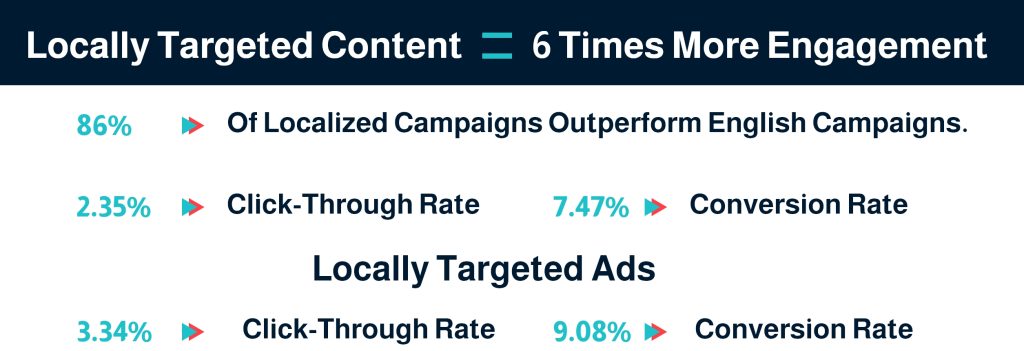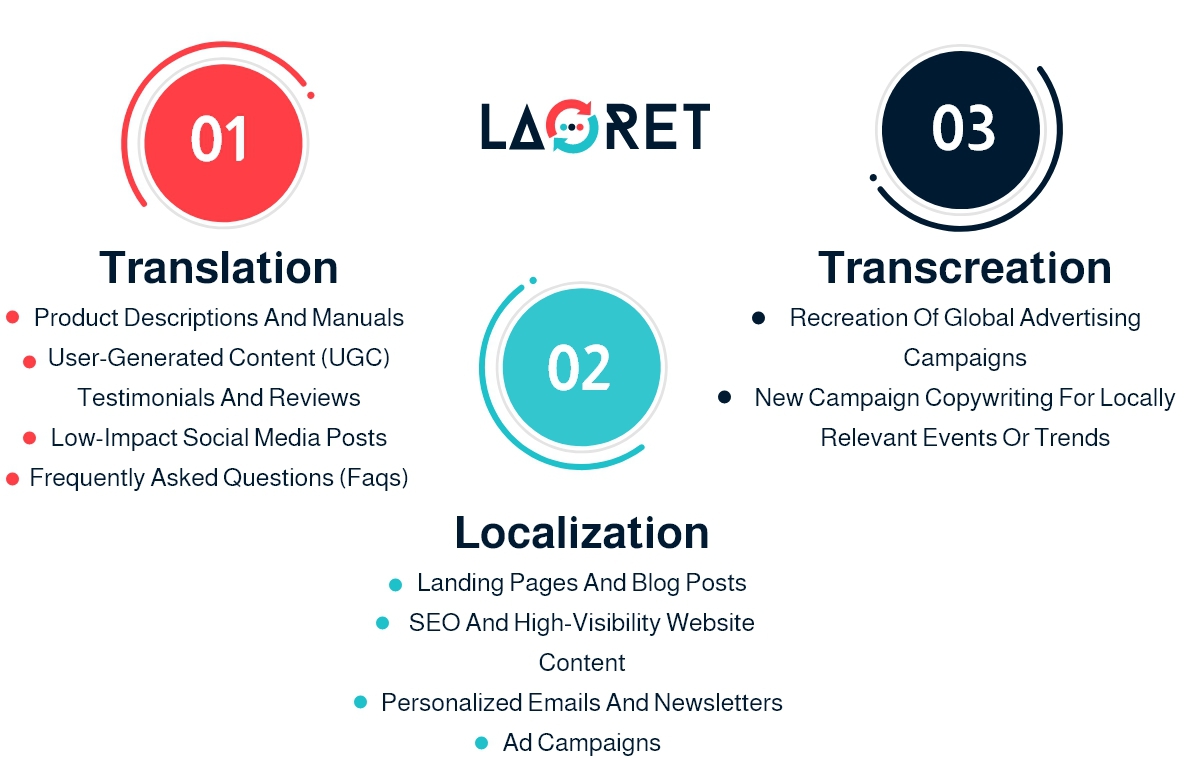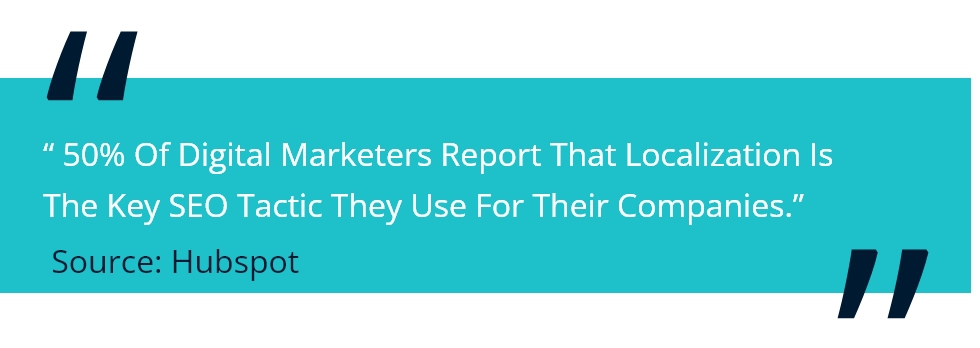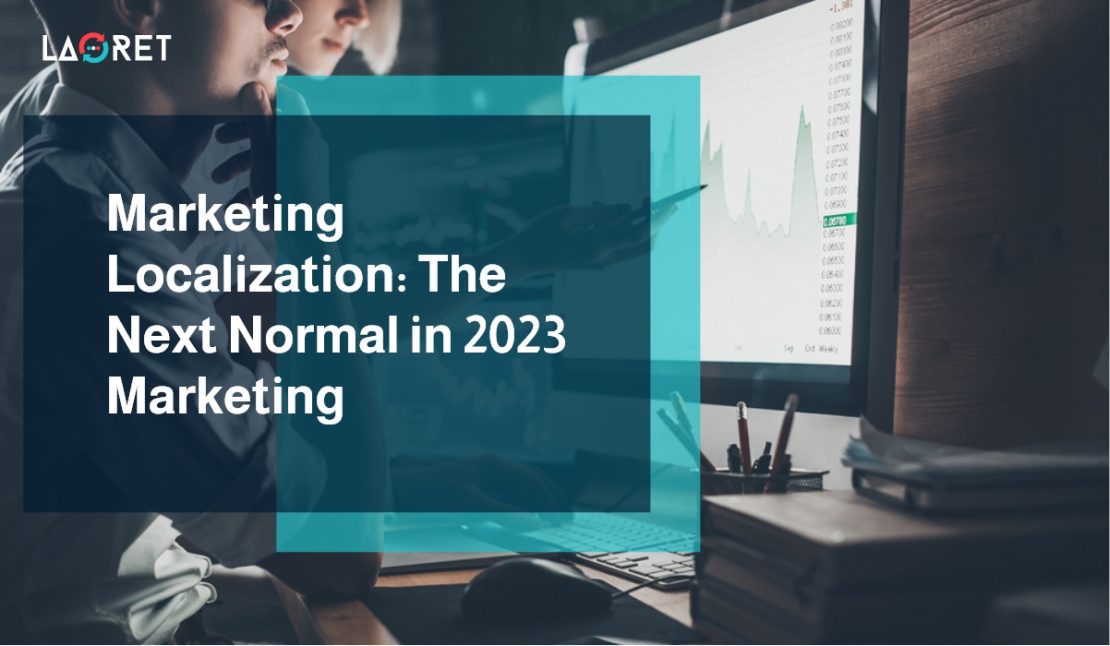Marketing Localization: The Next Normal in 2023 Marketing
Gone are the days when businesses and brands established themselves in a single market.
Driven by globalization, digital connectivity, and changing consumer behaviors, they are no longer stuck with the confines set by geographical barriers. They are no longer stuck selling to people who live in their home country.
Instead, they are more invested in a more dynamic growth approach worldwide, especially, when there’s no need for a physical location for a business to set up. They can sell their products or services to virtually anyone in the world from anywhere.
Similarly, they are no longer just advertising to their local customers, and they certainly can’t use the same marketing strategy for global customers.
In 2023, this has made marketing localization the next normal in marketing.
In this article, we dive deep into the powerful advantages of marketing localization while we explore the good and bad examples of cross-cultural marketing.
Marketing Localization: A Local Experience on A Global Scale
Multilingual marketing or marketing localization is adapting a brand’s marketing strategy as well as creating and delivering marketing content in multiple languages to effectively connect, convince, and convert diverse global audiences.
While this adaptation involves the content of different marketing collaterals and materials, some brands take their localization strategy one step further. Some might adapt the business model, products, or services to suit local preferences and tastes. A smart move that leverages the power of personalization to streamline market penetration and maximize customer satisfaction, brand perception, and value in new marketplaces.
Language in multilingual marketing is indeed a crucial factor. If your brand isn’t communicating in the language of your target customers, how they can understand, let alone buy, what you are offering?
The thing about marketing localization is that it’s a multilayered process that requires a deep comprehension of several linguistic, cultural, and societal aspects. It goes beyond conventional translation and linguistic adaptation.
From using locally relevant references and humor to adapting visual content and colors – it’s an intricate process that takes into account cultural sensitivities, local consumer behavior, and national customs.
Why Marketing Localization Matters That Much for Your Business?
A HubSpot report shows that 93% of businesses operate in more than one region, but 65% report marketing internationally.
Today, going global means catering to the “local”. But again, “local” here is an experience – which requires integrating marketing localization into each step of the customer’s journey.
Here’s a visualization of a typical customer journey and key localization integration points for a personalized experience that drives real impact.
| Awareness | Consideration | Decision and Purchase | Post-purchase and Advocacy |
| Localized Advertisements including Search and Video Ads to increase brand presence and awareness in the new market.Localized Email Marketing to introduce your brand services/products to potential customers.Localized Social Media Content to match the language and trends of the local audience. |
Translated Website: Translate and adapt your website to align with the preferences of your new audience, including your website’s content, design, and usability.
SEO: Increase the discoverability of your brand and its offerings by optimizing your website content with keywords relevant to the local market |
Pricing Localization: Display prices in the local currency.
Shipping and Payment Options: Translate your shipping and payment policy and offer payment methods commonly used and trusted locally.
|
Customer Support and Chatbots: Provide customer support in the local language through chatbots, email marketing, app notifications, alerts, and more.
Localized User-Generated Content and Reviews: Build reliability for potential customers in the same region. |
Now, what does your business get in return?
Reach Your Audience
The first mission that faces expanding businesses is to reach local audiences. And, according to statistics, language barriers could hinder your efforts.
According to a survey by CSA on global consumers:
- 65% prefer content in their language.
- 76% prefer to buy products with information in their native language (given the choice between buying two similar products).
- 75% are more likely to purchase the same brand again if customer care is in their language.
Localized marketing breaks down these barriers, offering your target audiences content that allows them to understand information effortlessly and explore products or services further. Not only that, but language does inform their decision-making. And with localization, you are making it easier for them to make a purchase.
Increase Engagement and Conversion
Establishing brand awareness is great, but global brands seek to engage and convert local customers through an emotional connection and bond.
When you implement marketing localization, you are speaking directly to the local audience and tapping into their preferences, interests, behaviors, and expectations. This is more than just providing clear and accurate content in their language.
This is about delivering an entire experience that feels genuine and familiar. From reaching them on their preferred channels to holding specific promotions on holidays and special days specific to their country, marketing localization builds relevance that captures the attention and resonates on a personal level. This eventually acts as an emotional trigger to make a purchase
Research shows that locally tailored content has 6 times more engagement than posts designed for the global market. What’s more, a study by Appia discovered that 86% of the localized campaigns outperformed the English campaigns in both click-throughs and conversions.

Maximize Revenue
By engaging local consumers and establishing rapport, global businesses maximize their profits. On top of that, tuning the content to be culturally appropriate lowers their chances of losing customers.
According to research, 49% of marketers reported that leveraging geo-targeting leads to the highest return on investment (ROI) when it comes to advertising. Geo-targeting means delivering locally relevant content and launching campaigns that target a specific location.
Furthermore, research shows that brands that fail to localize their apps can lose up to 8% and 13% of their customers.

Crack the Code of Successful Marketing Localization
Localizing your marketing strategy for each market requires comprehensive research and subsequent planning to guarantee effective execution. To that end, brands should collaborate with in-country marketing experts and native language professionals.
Here are 3 key tips to kick-start an impactful marketing localization strategy.
Know Your Audience: Market Research
Global brands must understand local consumers to speak their language. And what we mean by “language” here is not only their native language- that’s a given already. However, they should also consider different cultural nuances and varying consumer behaviors.
It’s crucial to conduct thorough market research before localizing your marketing strategy. To truly understand the local audience, you should identify the following points and integrate them into the marketing strategy:
- Cultural nuances and traditional customs
- Local user’s problems, interests, and desires
- Linguistic differences and dialects
- National celebrations and popular events
To give an example of how local insights shape your marketing strategy, let’s look at Lay’s targeted ad campaigns.
Frito Lay, the global brand for potato chips, used locally relevant topics and popular events to tailor their advertising for different markets.
For an ad that targets the European market, they related to the European Champions League starring the Football star, Lionel Messi. For their US campaign, they hopped on the rising excitement surrounding the American Super Bowl, starring Super Bowl legends like Eli Manning and Joe Montana.

Define Your Localization Approach
When it comes to multilingual marketing, there are several approaches to adapting the content. Translation, localization, or transcreation? In marketing localization, the three are essential. But the key is to know when to use each one.
In this section, we dive into the different definitions and types of content involved in each approach.
1. Translation
Translation serves the purpose of converting your marketing content from the source language to another language while retaining the original meaning, with limited consideration of the cultural nuances and contexts.
This approach requires source material which doesn’t often require a highly creative or nuanced translation.
Translation is ideal for the following content:
- Product Descriptions and Manuals
- User-Generated Content (UGC): Testimonials and Reviews
- Low-impact Social Media Posts
Frequently Asked Questions (FAQs)
2. Localization
Localization is the process of adapting the source material to capture specific linguistic and cultural nuances and tailor it for the target locale. It is designed to capture the nuances of culture-bound content such as slang, humor, and tone of voice as well as the visual elements, colors, and more with the goal of producing culturally appealing content.
Localization is essential for high-visibility content that requires creative tuning of the marketing messages.
Localization is ideal for the following content:
- Landing pages and Blog posts
- SEO and high-visibility Website Content
- Personalized Emails and Newsletters
- Ad Campaigns
- Social Media Content
3. Transcreation
Transcreation is a form of recreating content in the target language, which involves a higher level of creative cultural adaptation. It integrates the brand voice and key message of the source material into a newly produced piece of content that is highly unique and culturally relevant.
In transcreation, a source text is not always a necessity. Nevertheless, it requires a deep understanding of the brand identity and target customer persona, besides the expertise of in-country marketers and creative copywriters.
Transcreation is ideal for the following content:
- Brand Taglines
- Slogans
- Advertisements
- Content with heavy culture-specific elements such as idioms, slang, or cultural references.
So, whether you’re launching a highly specific local campaign or adapting a global advertisement, transcreation is your go-to!
To learn more about the multilayered process of transcreation, check out our article: Marketing Transcreation Tips

Optimize Marketing Channels
Implementing marketing localization involves seamlessly integrating localized strategies across various channels. Among these are website localization and search engine optimization (SEO).
Website localization ensures that the user experience is adapted to the local language and culture, enabling visitors to engage effortlessly. This goes beyond your service and product descriptions and essentially includes changing visual and formatting elements, such as units of measurement, currencies, and payment gateways to make sure your website is user-friendly and easy to navigate.
To give you an example, let’s take a look at the differences between Starbucks’ website in the US compared to Japan.
In parallel, SEO localization involves optimizing content with locally relevant keywords and terms, enhancing the brand’s discoverability in local search queries.
As no market is like the other, keywords and popular topics vary greatly according to location. For this reason, SEO translation alone might not be enough. SEO localization means using location-specific keywords and locally relevant terms and descriptions.
Additionally, SEO localization helps your brand stand out from the local competition. If you give the customers the content or product they need at the time they need using their language, you boost your website traffic and increase revenue.
The combination of website and SEO localization ensures that the brand not only engages effectively with the target audience but also improves conversion rates.

Email marketing also plays a significant role in establishing a relationship with your target audience. And of course, adapting your emails and newsletters requires more than just mere translation. The key to effective email localization lies in personalization. According to Epsilon insights, personalized emails achieve 122% ROI.
Expand Your Market Reach with Laoret’s Marketing Localization Solutions
If you’re a global business operating in diverse foreign-speaking markets, then marketing localization is your key to maintaining a successful presence.
Laoret’s multidisciplinary team of in-country translators, marketing experts, localization engineers, and creative copywriters is poised to help you facilitate effective cross-cultural communication.
Our 24/7 language services offer native and subject-matter expertise in +120 languages. We tailor our expertise to meet your specific needs of accuracy, efficiency, and cultural relevance.
Request a free quote now and see for yourself!






